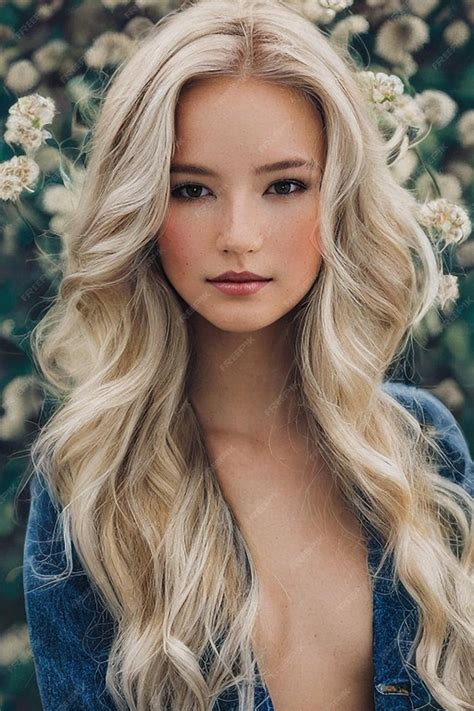Introduction

Hair color is a powerful way to express oneself and enhance one’s appearance. With countless shades and tones available, finding the best hair color for women can be a daunting task. This comprehensive guide provides an in-depth exploration of hair color options, skin undertones, and personalized recommendations to help you achieve your desired look.
Chapter 1: Understanding Hair Color Fundamentals
Color Wheel Theory
The color wheel is a fundamental tool for understanding the relationships between different hair colors. It is divided into three primary colors (red, yellow, and blue), three secondary colors (orange, green, and purple), and six tertiary colors. By mixing these colors, hair colorists can create a wide range of shades.
Levels of Hair Color
Hair color is measured on a scale of 1 to 10, with 1 being the darkest (black) and 10 being the lightest (blonde). This scale helps hair colorists determine the amount of lift (lightening) or deposit (darkening) required to achieve the desired shade.
Skin Undertone
Skin undertone refers to the underlying color of your skin. It can be classified as cool, warm, or neutral. Determining your skin undertone is crucial for choosing a hair color that complements your complexion.
Chapter 2: Hair Color Options for Every Skin Undertone
Cool Skin Undertone
Women with cool skin undertones often have pink, blue, or red undertones in their skin. They look best with hair colors that have cool, ashy tones, such as:
- Ash blonde
- Platinum blonde
- Dark brown with cool undertones
- Blue-black
Warm Skin Undertone
Women with warm skin undertones often have yellow, golden, or peach undertones in their skin. They look best with hair colors that have warm, golden tones, such as:
- Golden blonde
- Auburn
- Caramel
- Honey brown
Neutral Skin Undertone
Women with neutral skin undertones can wear a wider range of hair colors because their skin has no dominant warm or cool undertones. However, they tend to look best with hair colors that have subtle, natural tones, such as:
- Chocolate brown
- Warm or cool blonde
- Black
Chapter 3: Personalized Hair Color Recommendations
Hair Color for Different Eye Colors
- Brown eyes: Warmer hair colors like golden blonde, auburn, or caramel
- Blue eyes: Cooler hair colors like ash blonde, platinum blonde, or dark brown
- Green eyes: Hair colors that complement both cool and warm undertones, such as warm brown, blonde with golden undertones, or red
Hair Color for Different Hair Textures
- Fine hair: Lighter hair colors like blonde or light brown can create volume and movement
- Thick hair: Darker hair colors like black or dark brown can make hair appear less bulky
- Curly hair: Hair colors that add richness and depth, such as chocolate brown, auburn, or caramel
Chapter 4: Common Mistakes to Avoid
- Choosing a hair color that doesn’t suit your skin undertone
- Going too light or too dark too quickly
- Over-processing your hair
- Using low-quality hair color
- Ignoring the maintenance requirements of your new hair color
Chapter 5: FAQs
1. How often should I color my hair?
A: This depends on your hair growth rate, the type of color you use, and your desired level of maintenance. Most experts recommend touching up hair color every 4-8 weeks.
2. Can I dye my hair at home?
A: Yes, but it’s important to follow the instructions carefully and choose a high-quality hair color. If you have any concerns, it’s best to consult with a professional hair colorist.
3. How can I prevent hair damage from coloring?
A: Use a deep conditioner after coloring and protect your hair from heat styling tools. Consult with your hair colorist about using bond builders or hair treatments to strengthen and repair your hair.
4. What are the long-term effects of hair coloring?
A: Over-processing can damage hair, leading to dryness, breakage, and loss of elasticity. It’s important to balance the benefits of hair coloring with proper hair care practices.
5. How can I find a good hair colorist?
A: Look for hair colorists who have experience and expertise in working with different hair types and skin tones. Read reviews and ask for recommendations from friends or family members.
6. What are the latest trends in hair color?
A: Balayage, ombré, babylights, and root smudging are popular techniques that create dimensional and natural-looking hair color.
Chapter 6: Conclusion
Choosing the best hair color for women involves considering your skin undertone, eye color, hair texture, and personal preferences. By understanding the fundamentals of hair color and avoiding common mistakes, you can achieve a hair color that enhances your beauty and empowers your self-expression. Remember to consult with a professional hair colorist for personalized recommendations and expert advice.
